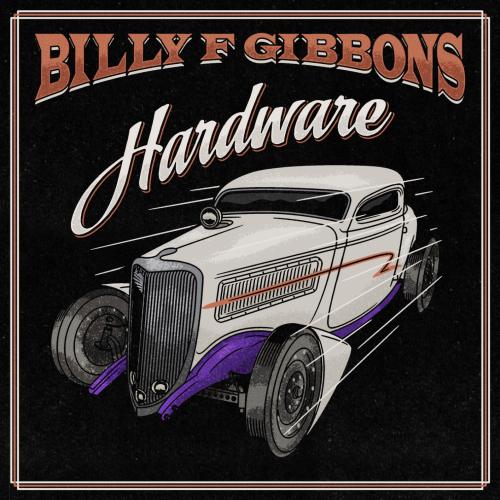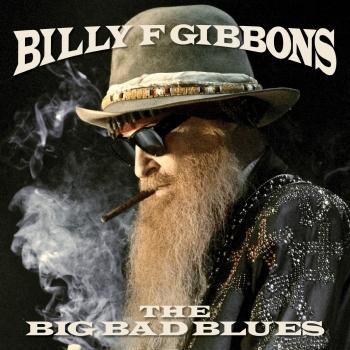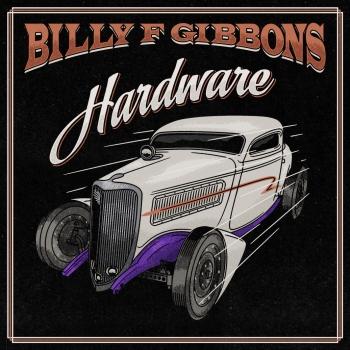
Hardware Billy F Gibbons
Album info
Album-Release:
2021
HRA-Release:
04.06.2021
Album including Album cover
I`m sorry!
Dear HIGHRESAUDIO Visitor,
due to territorial constraints and also different releases dates in each country you currently can`t purchase this album. We are updating our release dates twice a week. So, please feel free to check from time-to-time, if the album is available for your country.
We suggest, that you bookmark the album and use our Short List function.
Thank you for your understanding and patience.
Yours sincerely, HIGHRESAUDIO
- 1 My Lucky Card 02:35
- 2 She’s On Fire 02:46
- 3 More-More-More 03:02
- 4 Shuffle, Step & Slide 03:10
- 5 Vagabond Man 03:59
- 6 Spanish Fly 04:01
- 7 West Coast Junkie 02:48
- 8 Stackin’ Bones 03:16
- 9 I Was A Highway 02:34
- 10 S-G-L-M-B-B-R 02:25
- 11 Hey Baby, Que Paso 02:53
- 12 Desert High 03:27
Info for Hardware
Rock and Roll Hall of Famer and ZZ Top frontman, Billy F Gibbons wants to take you on a desert trip. Hardware is Billy's third release as a solo artist. He compiled a group of a-listers including Matt Sorum (dr), Austin Hanks (gtr) and headed into the California desert to record in Pioneertown. Hardware features the guitar prowess and vocals that have made Billy a legend but it also shows Billy stretching his music landscape past the place where the road ends.
Billy F Gibbons new album ‘Hardware’ is a return to his rock-a-boogie template, but with a contemplative feel born of the band’s isolated recording environment in the Mojave desert.
There’s always something consistently familiar about Billy F Gibbons. It isn’t just his cartoon character appearance, the Texas drawl, or indeed his significant crunchy guitar tones. It has more to do with the fact that as a songwriter you can always rely on him to incorporate something different into a familiar context, be it humour in a rock setting, or dabbling in faux Spanish on a Tex Mex cover.
As a title, Hardware is an affectionate nod to the late and great recording engineer Joe Hardy, whose working relationship with Gibbons and ZZ Top goes back to the mid-1980s. The album also bears the influence of its recording location. “The desert settings, replete with shifting sands, cacti and rattlesnakes makes for the kind of backdrop that lends an element of intrigue reflected in the sounds created out there,” says Gibbons.
There”s a guest appearance on the standout “Stackin’ Bones” by souful rock duo Larkin Poe, with whom Gibbons has been friendly for some time, after meeting via Tyler Bryant, husband of Larkin Poe’s Megan Lovell. Bryant had toured extensively with ZZ Top, and Larkin Poe shared the bill with Gibbons at the Love Rocks NYC benefit in 2019.
“We holed up in the desert for a few weeks in the heat of the summer and that in itself was pretty intense,” Gibbons concludes. “To let off steam we just ‘let it rock’ and that’s what Hardware is really all about. For the most part, it’s a raging rocker but always mindful of the desert’s implicit mystery.”
Billy F Gibbons, guitar, vocals
Austin Hanks, guitar, bass
Matt Sorum, drums
Produced by Billy F Gibbons with Matt Sorum and Mike Fiorentino
Billy Gibbons
Along with the late Stevie Ray Vaughan, ZZ Top guitarist Billy Gibbons is unquestionably one of the finest blues-rock guitarists to ever emerge from Texas. Born on either March 4 or December 16, 1950 (both dates have been given in the past), and raised in Houston, Texas, Gibbons grew up in a home that favored both classical and country sounds, but upon discovering Elvis Presley via an appearance on The Ed Sullivan Show, Gibbons became transfixed by rock & roll. It wasn’t long before he discovered other early rock & rollers (Little Richard) as well as bluesmen (Jimmy Reed) via a local radio station. Soon after receiving a Gibson Melody Maker electric guitar and a Fender Champ amp for Christmas in 1963, Gibbons began emulating his heroes — forming his first band when he was 14 (the Saints). The guitarist later joined a group around the mid-’60s called the Coachmen, who specialized in more psychedelic-based sounds, inspired by the likes of Jefferson Airplane, Jimi Hendrix, and the local Texas outfit 13th Floor Elevators (led by a young Roky Erickson). Gibbons’ band eventually changed their name to the Moving Sidewalks, issuing a lone album in 1968, Flash, although an early single, “99th Floor,” would later receive attention when included years later on the Pebbles: Vol. 2 compilation. While the Moving Sidewalks never made a splash outside of Texas, Gibbons must have been pleased when Jimi Hendrix (with whom the Sidewalks toured with around this time) began endorsing the guitarist as one of his favorite new players to the media.
Rio Grande Mud When the Moving Sidewalks folded in 1969, Gibbons sought to form a more straight-ahead, boogie/blues-rock-based band, and after hooking up with a pair of other fellow Texans, bassist Dusty Hill and drummer Frank Beard, ZZ Top were born. The power trio slowly but steadily built up a solid following, largely due to Gibbons’ tasty guitar playing and muscular riffs (especially evidenced on such renowned tracks as “La Grange” and “Tush”). Over the course of five classic albums over a six-year span (1970’s self-titled debut, 1972’s Rio Grande Mud, 1973’s Tres Hombres, 1975’s Fandango, and 1976’s Tejas), ZZ Top became one of the country’s top rock bands before taking a three-year break. When they returned, the musical climate had changed considerably, and ZZ Top opted to change with the times — as a more modern, electronic sound was merged with their blues-rock roots on such albums as 1979’s Deguello and 1981’s El Loco. But with the release of 1983’s Eliminator, the new approach came together for the group, while both Gibbons and Hill happened to come across a gimmick that will be forever associated with the group: long and stringy beards that grew down to their chests. It didn’t hurt that the group was responsible for some of MTV’s most popular video clips of all time (which always seemed to primarily focus on good-looking girls and a snazzy 1933 Ford three-door coupe, rather than the bandmembers), “Give Me All Your Loving,” “Sharp Dressed Man,” and “Legs.” Gibbons and Hill also became known for their assortment of matching and outlandish guitars, which were also always on display in their videos.
La Futura But the trio’s newly acquired commercial direction caused some consternation among longtime fans, and by the mid-’90s, new ZZ Top albums failed to sell as well as their earlier titles had, although a large and loyal following still flocked to their shows. Following 2003’s Mescalero, ZZ Top parted ways with RCA and it took them nearly a decade to deliver a new album: the Rick Rubin-produced La Futura appeared on American in 2012. Gibbons quickly followed that album with his first-ever solo project, the Cuban-inflected Perfectamundo, where he was supported by a group called the BFG’s. Perfectamundo appeared in November 2015.
A longtime vintage guitar collector, Gibbons owns some of the world’s most cherished and rare guitars, including a particular instrument that he’s become synonymous with, a 1959 Sunburst Les Paul Standard (which he dubbed “Pearly Gates”). In addition to music, Gibbons supposedly owns several automotive-related patents in his name, is an avid painter, and collects rare African art and artifacts, amassing so many that he was forced to store them in a warehouse in Houston. Besides recording with ZZ Top, Gibbons has been known to go by the alias Justis Walkert, appearing on recordings by Jeff Healey (Feel This) and the Rainer & Das Combo (The Texas Tapes). But it’s obviously Gibbons’ exceptional playing with ZZ Top that he’s best known for, as the guitarist has influenced a wide variety of players over the years, including the Meat Puppets’ Curt Kirkwood and Pantera’s Dimebag Darrell, to name just two.
This album contains no booklet.












